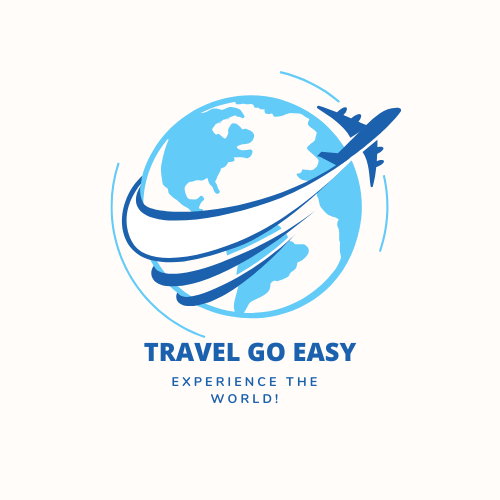Physical Address
304 North Cardinal St.
Dorchester Center, MA 02124
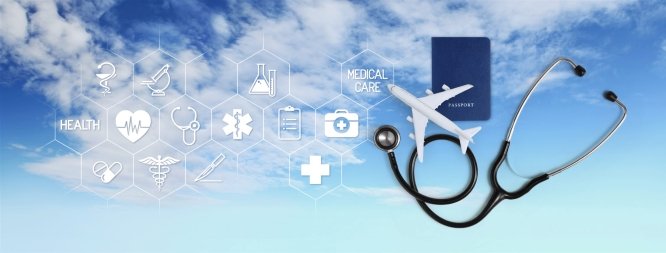
Medical Tourism in India- Why Millions Trust It Annually?
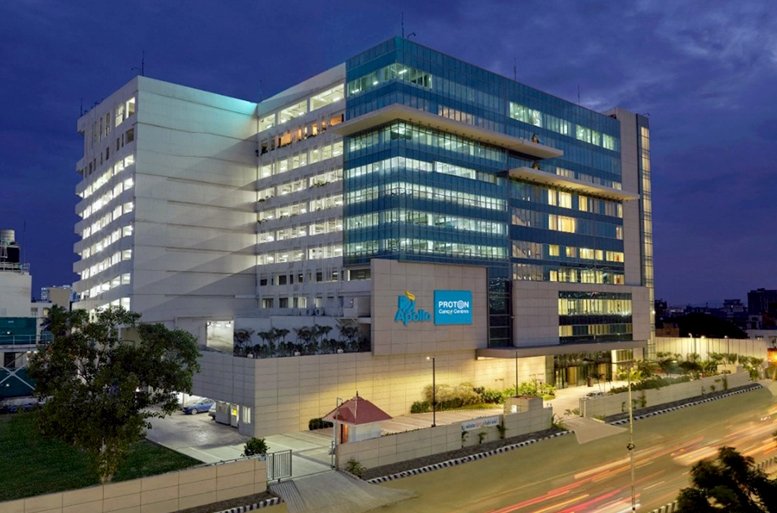
Medical Tourism in India
Meta Description: Discover why India has become the world’s leading medical tourism destination. From affordable treatments to world-class facilities, explore cheap flights and budget-friendly hotels for your healing journey.
Have you ever wondered why over 2 million people annually choose India for their medical treatments? The answer lies not just in the remarkable cost savings, but in the perfect blend of ancient healing wisdom and cutting-edge medical technology that this incredible country offers.
Walking through the corridors of Apollo Hospital in Chennai, I witnessed something extraordinary. Patients from over 120 countries were receiving world-class treatment at a fraction of what they would pay back home. The air buzzed with conversations in dozens of languages, yet there was a universal sense of hope and healing that transcended all barriers.
India’s rise as the world’s premier medical tourism destination isn’t accidental. The country has strategically positioned itself as a hidden gem in healthcare, offering treatments that cost 60-90% less than Western countries while maintaining international quality standards. This undiscovered paradise of affordable healthcare has become the preferred choice for millions seeking healing without financial burden.
The secret lies in India’s unique approach to medicine. Here, ancient Ayurvedic practices seamlessly blend with modern surgical techniques, creating a holistic healing environment that addresses both physical ailments and spiritual wellness. When you step into facilities like Fortis Healthcare or Max Super Speciality Hospital, you’re not just entering a hospital – you’re entering a secret sanctuary where healing becomes an art form.
The country’s medical infrastructure has evolved dramatically over the past two decades. State-of-the-art equipment, internationally trained doctors, and JCI-accredited hospitals have transformed India into a locally preferred destination for complex medical procedures. The cost advantage is staggering: a heart bypass surgery that costs $100,000 in the US can be performed here for just $7,000, including accommodation and recovery time.
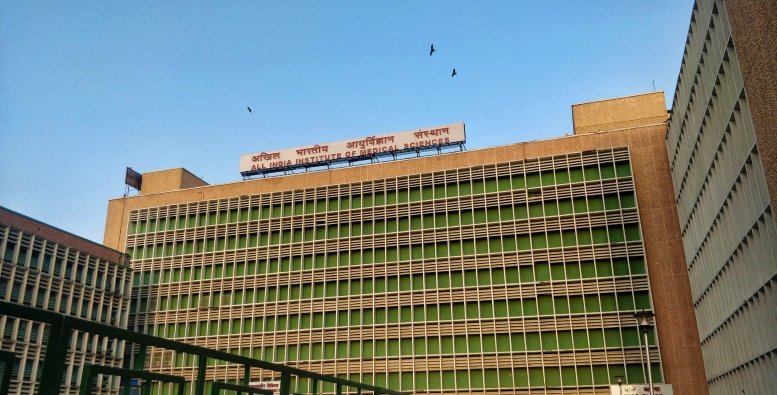
Delhi NCR The Medical Capital
Delhi stands as India’s undisputed medical hub, housing some of Asia’s most advanced healthcare facilities. The city’s unexplored treasures include AIIMS, Medanta, and Fortis Escorts, each offering specialized treatments that attract patients from across the globe.
The experience of navigating Delhi’s medical landscape is like discovering hidden wonders. From the bustling streets of Connaught Place to the serene environment of hospital complexes, every corner tells a story of healing and hope. The metro connectivity makes it incredibly easy to move between hospitals, hotels, and cultural sites during your recovery period.
For budget-conscious travelers, Delhi offers excellent connectivity through Indira Gandhi International Airport, with numerous cheap flights available from major global destinations. The city’s accommodation options range from luxury hotels near medical facilities to budget-friendly guesthouses that cater specifically to medical tourists.

Mumbai: Where Bollywood Meets Medicine
Mumbai’s medical tourism scene is as vibrant as its film industry. Hospitals like Kokilaben Dhirubhai Ambani Hospital and Jaslok Hospital have created undiscovered gems in specialized treatments, particularly in oncology and cardiac care.
The city’s unique charm lies in its ability to blend treatment with entertainment. During recovery periods, patients often find themselves exploring the locally favored spots along Marine Drive or experiencing the bustling energy of Crawford Market. The sea breeze and cosmopolitan atmosphere contribute significantly to the healing process.
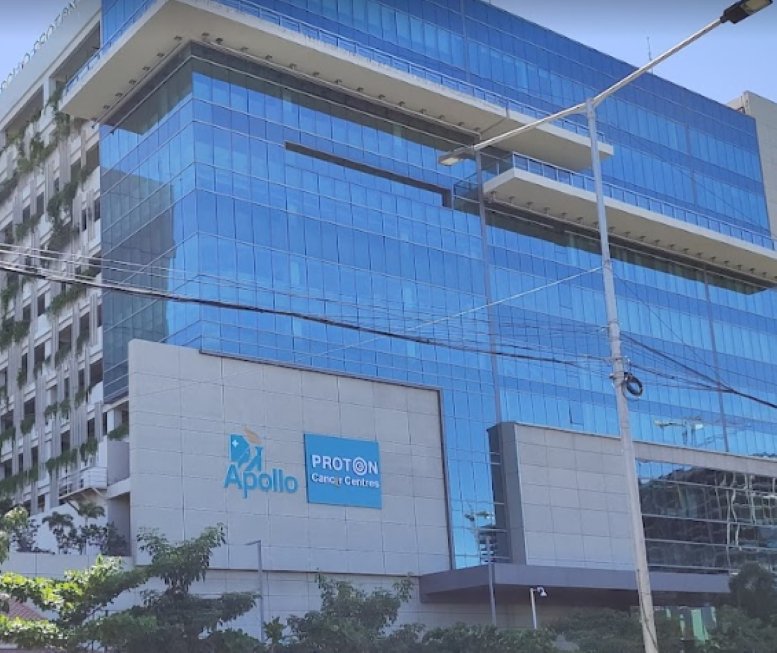
Chennai: The Detroit of Medical Tourism
Chennai has earned its reputation as India’s medical capital through institutions like Apollo Hospital, which pioneered medical tourism in the country. The city’s secret havens include specialized treatment centers that offer everything from complex surgeries to traditional Ayurvedic therapies.
What makes Chennai special is its perfect balance of modernity and tradition. Patients can undergo cutting-edge treatments in the morning and participate in classical music performances in the evening. The city’s family vacation ideas extend beyond medical care to include temple visits, beach walks, and cultural immersion experiences.
Planning a medical trip to India requires careful consideration of multiple factors, but the process can be surprisingly affordable and straightforward. The key is understanding how to navigate the system while maximizing both healthcare outcomes and cost savings.
Medical tourism in India operates on a transparent pricing model that includes treatment, accommodation, and recovery costs. A typical cardiac procedure package might include:
These comprehensive packages often cost less than just the consultation fees in Western countries, making India an economical choice for complex medical procedures.
Timing your medical trip can significantly impact both costs and comfort. The winter months (November to February) offer pleasant weather but higher accommodation prices. The monsoon season (June to September) provides the most budget-friendly options, with hotel rates dropping by 40-50%.
However, for medical procedures, the ideal time is often determined by your health condition rather than weather preferences. Most hospitals maintain consistent quality care year-round, and modern facilities are fully air-conditioned and equipped to handle any season’s challenges.
India’s top-tier hospitals rival any international facility in terms of technology, expertise, and patient care. Apollo Hospitals, with 64 locations across the country, has treated over 100 million patients and maintains a success rate comparable to leading US hospitals.
The experience at Medanta in Gurgaon feels like stepping into a hidden paradise of medical excellence. The 1,250-bed facility houses 45 operation theaters and offers treatments across 22 specialties. What strikes visitors most is the seamless blend of advanced technology with warm, personalized care that characterizes Indian hospitality.
Different regions excel in specific medical specialties:
Each center represents an undiscovered treasure in its specialty, combining global best practices with India’s inherent healing traditions.
For those seeking premium comfort during recovery, India offers specialized medical hotels that cater exclusively to international patients. These facilities, often located within hospital complexes, provide family-friendly environments where comfort meets medical necessity.
The Oberoi and Taj chains have developed specific packages for medical tourists, including dedicated nursing assistance, dietary consultations, and recovery facilities. Rates typically range from $150-400 per night, still significantly lower than comparable facilities elsewhere.
India’s affordable accommodation options include numerous guesthouses and budget hotels specifically designed for medical tourists. These economical choices often provide:
Rates start from as low as $15-30 per night, making extended stays financially feasible for most budgets.
For longer recovery periods, serviced apartments offer the perfect budget solution. Companies like Ashtavakra and Medical Tourism Corporation provide fully furnished apartments near major hospitals, complete with housekeeping and medical assistance services.
These apartments become secret retreats where families can maintain normalcy while managing medical treatments. Monthly rates often provide significant savings compared to hotel stays, particularly for procedures requiring 4-6 weeks of recovery time.
India’s major medical destinations are well-connected through international airports offering cheap flights from global destinations. Delhi, Mumbai, Chennai, and Bangalore serve as primary entry points, each equipped with dedicated medical tourism assistance desks.
The experience of arriving in India for medical treatment has been streamlined significantly. Airport authorities provide fast-track services for medical tourists, ensuring smooth transitions from aircraft to ground transportation. Many hospitals offer complimentary airport pickup services, transforming potential stress into seamless comfort.
Navigating Indian cities during medical treatment requires understanding local transportation options:
The key is choosing transportation that prioritizes comfort and reliability during your healing journey. Many medical tourists discover that local transport becomes part of their cultural experience, offering glimpses into daily Indian life.
Recovery periods in India offer unique opportunities to experience the country’s rich cultural heritage. Unlike typical tourist visits, medical tourism allows for deeper, more meaningful connections with local traditions and practices.
The concept of healing in India extends beyond medical procedures to encompass spiritual and emotional wellness. Patients often find themselves participating in morning yoga sessions, exploring local markets, or experiencing traditional music performances. These activities become undiscovered gems that enhance the overall healing process.
India’s approach to recovery incorporates ancient wellness practices that complement modern medical treatments. Ayurvedic consultations, meditation sessions, and traditional massage therapies are readily available and often recommended by medical professionals as part of comprehensive treatment plans.
Kerala’s backwaters offer particularly hidden sanctuaries for recovery, where traditional houseboats provide peaceful environments for healing. The gentle lapping of water, combined with Ayurvedic treatments and fresh, organic meals, creates an atmosphere conducive to both physical and spiritual renewal.
India’s medical visa system has been designed specifically to facilitate healthcare tourism. The process, while straightforward, requires proper documentation and planning. Medical visas are typically valid for one year with multiple entries, allowing for follow-up treatments and consultations.
Required documentation includes:
The entire process usually takes 7-14 days, making it accessible for both planned and urgent medical procedures.
India recognizes that medical treatment often requires family support. The medical attendant visa allows up to two companions to accompany patients, ensuring family-friendly treatment experiences. This consideration reflects India’s understanding that healing involves not just the patient but their entire support system.
The cost advantages of choosing India for medical treatment become apparent when comparing specific procedures:
Cardiac Procedures:
Orthopedic Procedures:
Cancer Treatment:
These figures represent not just cost savings but access to life-saving treatments that might otherwise be financially impossible.
When planning medical tourism in India, consider comprehensive package costs that include treatment, accommodation, food, and transportation. A typical cardiac surgery package including 15-day stay might cost:
This represents savings of over $80,000 compared to similar treatment in Western countries, making India an economical choice that doesn’t compromise on quality.
Successful medical tourism requires balancing treatment schedules with recovery time and cultural exploration. The best planning strategies involve creating flexible itineraries that accommodate medical requirements while allowing for meaningful experiences.
A typical 3-week cardiac surgery itinerary might include:
This structure allows for proper medical care while ensuring that the healing process incorporates India’s therapeutic cultural environment.
India’s extensive healthcare network allows for multi-city treatment approaches. Patients might undergo initial consultations in Delhi, surgery in Chennai, and recovery in Kerala’s peaceful backwaters. This flexibility creates opportunities to experience India’s diversity while receiving specialized care from different regional experts.
The connectivity between major medical cities makes such tourist route planning feasible and often beneficial. Each city offers unique advantages: Delhi’s comprehensive facilities, Mumbai’s cosmopolitan environment, Chennai’s specialized expertise, and Bangalore’s technological advancement.
Sarah Mitchell from Australia arrived in Chennai with a complex heart condition that required immediate surgery. “I was initially skeptical about traveling to India for such a critical procedure,” she recalls. “But the level of care at Apollo Hospital exceeded anything I had experienced. The doctors were not just technically excellent but genuinely caring. The cost savings allowed my entire family to stay with me throughout the treatment.”
Her experience reflects thousands of similar stories where India’s medical tourism has provided not just affordable treatment but comprehensive healing experiences that address both physical and emotional needs.
Medical tourism from African countries has grown exponentially, with patients finding affordable solutions for complex procedures. Dr. Kwame Asante from Ghana brought his daughter to India for pediatric cardiac surgery. “The expertise available here, combined with the cost-effectiveness, made it possible for us to give our daughter a normal life. The budget-friendly options allowed us to focus on her recovery rather than financial stress.”
Patients from the Middle East particularly appreciate India’s cultural sensitivity and halal food options. The family vacation ideas often extend treatment stays into cultural exploration, with families discovering India’s hidden gems while managing medical procedures.
India’s medical tourism success stems from its integrated approach to healing. Recovery programs combine medical monitoring with wellness activities, creating environments where healing becomes a holistic experience rather than just a medical procedure.
Hospitals like Manipal and Fortis have developed specialized recovery programs that include:
India’s medical tourism model extends beyond initial treatment to include comprehensive follow-up care. Many hospitals maintain international patient coordinators who manage post-treatment care, arrange for local consultations in patients’ home countries, and provide telemedicine support.
This continued care model ensures that the economical initial treatment translates into long-term health benefits, making India a locally preferred choice for ongoing medical relationships.
India has become a popular destination for senior citizens seeking affordable medical care. The country’s respect for elders, combined with specialized geriatric care facilities, creates environments where older patients feel valued and supported.
Many hospitals offer specialized senior citizen packages that include extended family accommodation, slower-paced treatment schedules, and cultural activities appropriate for older travelers. The budget considerations often make multiple trips feasible, allowing for gradual treatment approaches that might not be financially possible elsewhere.
Families seeking pediatric treatments find India’s family-friendly medical facilities particularly appealing. Children’s hospitals like Rainbow Children’s Hospital and Fortis La Femme have created environments that minimize treatment trauma while providing world-class medical care.
The family trip planning aspect becomes crucial when children are involved. India’s medical tourism industry has adapted to provide entertainment, educational activities, and family support services that make extended medical stays manageable for entire families.
India’s advancement in women’s healthcare has made it a preferred destination for fertility treatments, gynecological procedures, and maternal care. The cultural understanding of family dynamics, combined with advanced medical technology, creates supportive environments for women’s health procedures.
Specialized facilities like Nova IVF and Fortis La Femme have developed comprehensive programs that address not just medical needs but also emotional and cultural considerations important to women from different backgrounds.
India’s medical facilities rival the world’s best in terms of technological advancement. Hospitals like Medanta and Apollo have invested heavily in robotic surgery systems, advanced imaging technology, and precision medicine capabilities.
The undiscovered paradise of medical technology in India includes innovations like:
India’s medical tourism growth has spurred significant investment in research and development. Many hospitals collaborate with international research institutions, ensuring that patients benefit from the latest medical advances while paying economical prices.
The country’s pharmaceutical industry, which supplies 40% of generic medicines globally, ensures that medication costs remain affordable while maintaining international quality standards.
While medical emergencies don’t wait for perfect weather, planned procedures can benefit from seasonal considerations. India’s diverse climate zones offer different advantages throughout the year.
Winter Season (November-February):
Summer Season (March-June):
Monsoon Season (July-October):
India’s culinary diversity offers significant advantages for medical tourists with specific dietary requirements. The country’s vegetarian-friendly culture, combined with its understanding of food as medicine, creates ideal conditions for recovery nutrition.
Hospitals typically provide:
The concept of ahara (therapeutic food) in traditional Indian medicine complements modern nutritional science, creating comprehensive dietary support for healing processes.
India’s predominantly vegetarian culture makes it an ideal destination for plant-based eaters requiring medical treatment. The abundance of fresh vegetables, fruits, legumes, and grains ensures that vegetarian and vegan patients receive optimal nutrition during recovery periods.
Many cultural experiences revolve around food preparation and sharing, allowing patients to engage with local communities while maintaining their dietary preferences.
India’s medical tourism industry has adapted to serve global patients through comprehensive language support. Most major hospitals employ staff fluent in multiple languages, including English, Arabic, French, Russian, and various African languages.
Communication support includes:
This comprehensive communication support transforms potential language barriers into hidden opportunities for cultural exchange and learning.
Indian hospitals provide detailed medical documentation in English, ensuring that patients can easily share their treatment records with healthcare providers in their home countries. This transparency and documentation quality have contributed significantly to India’s reputation as a trusted medical tourism destination.
While many international insurance plans don’t cover medical tourism, specialized medical travel insurance has emerged to fill this gap. These policies typically cover:
Several Indian hospitals have partnered with international insurance providers to offer seamless coverage options, making medical tourism more accessible and secure.
India’s medical tourism industry offers flexible payment options accommodating different financial situations:
These budget-friendly options ensure that financial constraints don’t prevent access to life-saving treatments.
India’s medical tourism industry continues evolving, with emerging trends that promise even greater value and convenience:
New medical specializations are emerging as undiscovered treasures in Indian healthcare:
These developments position India as a preferred destination for cutting-edge medical treatments at affordable prices.
India’s medical tourism industry is increasingly incorporating sustainability principles. Many hospitals have implemented:
These initiatives appeal to environmentally conscious medical tourists while contributing to global sustainability goals.
India’s advanced medical waste management systems ensure that the growth in medical tourism doesn’t compromise environmental safety. Specialized disposal facilities and recycling programs maintain the hidden sanctuaries of natural beauty that make recovery periods more pleasant.
As the sun sets over India’s diverse landscape, millions of medical tourists have discovered that healing involves more than just medical procedures. They’ve found a country where ancient wisdom meets modern medicine, where affordable care doesn’t mean compromised quality, and where the journey to wellness becomes a transformative experience.
India’s medical tourism industry represents one of the world’s most significant hidden gems, offering hope to those who thought quality healthcare was beyond their financial reach. The statistics speak for themselves: over 2 million medical tourists annually, savings of 60-90% compared to Western countries, and success rates that match or exceed global standards.
Whether you’re seeking cardiac surgery in Chennai, orthopedic treatment in Delhi, or cancer care in Mumbai, India offers not just medical solutions but holistic healing experiences. The country’s unique blend of cutting-edge technology, experienced practitioners, and cultural richness creates environments where recovery becomes a journey of discovery.
The economical nature of Indian medical tourism extends beyond immediate cost savings to long-term health partnerships. Many patients return regularly, building relationships with healthcare providers that span years or decades. These ongoing connections ensure continuity of care while allowing for medical relationships built on trust and mutual respect.
For families planning medical tourism, India offers budget-friendly options that make quality healthcare accessible without financial strain. The comprehensive support systems, from airport pickup to post-treatment follow-up, ensure that medical needs are met while families can focus on healing and recovery.
As you consider your own medical tourism journey, remember that choosing India means joining millions who have discovered that exceptional healthcare doesn’t have to be expensive. The undiscovered paradise of Indian medical tourism awaits, ready to transform your healing journey into an experience of hope, discovery, and renewed health.
Your path to wellness begins with a single decision. Why not let India’s hidden sanctuaries of healing become part of your story? The journey to better health has never been more accessible, affordable, or transformative.
Ready to begin your healing journey? Explore our comprehensive travel planning services at TravelGoEasy.net and discover how we can help you access world-class medical care while experiencing India’s incredible cultural richness. From cheap flights to budget-friendly hotels, we ensure your medical tourism experience is seamless, affordable, and transformative.
Q: How much can I save by choosing medical treatment in India? A: Patients typically save 60-90% compared to treatment costs in Western countries, with savings often reaching $50,000-100,000 for complex procedures.
Q: Are Indian hospitals safe and properly accredited? A: Yes, leading Indian hospitals maintain JCI accreditation and international quality standards, with success rates matching or exceeding global benchmarks.
Q: How long should I plan to stay in India for medical treatment? A: Stay duration varies by procedure, typically ranging from 2-3 weeks for minor surgeries to 6-8 weeks for complex procedures requiring extended recovery.
Q: Do I need special insurance for medical tourism in India? A: While not mandatory, medical tourism insurance is recommended to cover potential complications, extended stays, or emergency evacuations.
Q: Can my family accompany me during treatment? A: Yes, India’s medical attendant visa allows up to two family members to accompany patients, with hospitals providing family-friendly accommodation options.
Q: What languages are supported in Indian hospitals? A: Major hospitals provide multilingual support including English, Arabic, French, Russian, and various regional languages through professional interpreters.
Q: How do I choose the right hospital and doctor? A: Research JCI-accredited facilities, review doctor qualifications, read patient testimonials, and consult with hospital international patient coordinators.
Q: What about follow-up care after returning home? A: Indian hospitals provide comprehensive follow-up through telemedicine, coordinate with local doctors, and maintain long-term patient relationships.
Keywords Targeted in This Article: Medical tourism India, cheap flights, budget-friendly hotels, affordable healthcare, economical treatment, family vacation ideas, hidden gems, undiscovered treasures, locally preferred destinations, cultural experiences, popular destinations, planning travel trips, planning tourist routes, family trip planning, budget travel, medical treatment costs, hospital packages, recovery programs, healthcare savings, medical visa India.
This article is exclusively created for TravelGoEasy.net and is protected by copyright. Unauthorized copying or reproduction is prohibited. For inquiries about content licensing, please contact TravelGoEasy.net directly.
Explore our comprehensive travel planning services at TravelGoEasy.net and discover how we can help you access world-class medical care while experiencing India’s incredible cultural richness.
